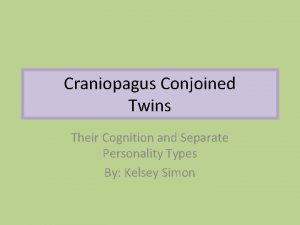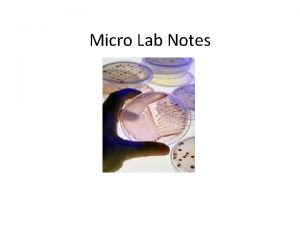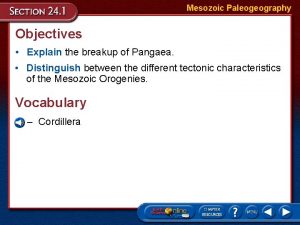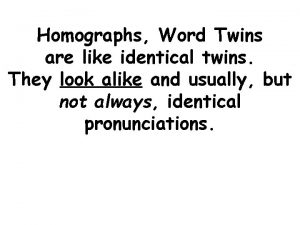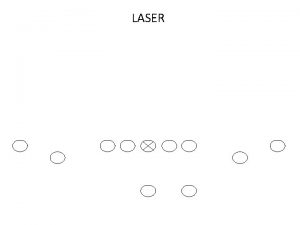Conjoined Twins Most of conjoined twins occurred as











- Slides: 11

Conjoined Twins Most of conjoined twins occurred as a result of certain defects occurred during separation of the cell-stage of first cleavage of monozygotic twins.

Conjoined Twins

Bilateral cleft lip

Abnormal Monsters (Conjugat ed Twins)

Abnormal Monsters (Conjugate d Twins)




Normal values of semen variables Standard tests volume 2. 0 ml or more p. H 7. 2 -8. 0 sperm concentration 20 x 106 spermatozoa/ml or more total sperm count 40 x 106 spermatozoa per ejaculate or more motility 50% or more with forward progression(categories a and b)or 25% or more with rapid progression(category a)within 60 minutes of ejaculation morphology 30% or more with normal forms vitality 75% or more live, i. e. , excluding dye white blood cells fewer than 1 x 106/ml immunobead test fewer than 20% spermatozoa with adherent particles MAR test fewer than 10% spermatozoa with adherent particles Optional tests a -Glucosidase(neutral) 20 m. U or more per ejaculate zinc(total) 2. 4 m -mol or more per ejaculate citric acid(total) 52 m -mol or more per ejaculate acid phosphatase(total) 200 U or more per ejaculate fructose(total) 13 m -mol or more per ejaculate

Pattern of Sperm abnormalities: • Oligospermia : Sperm concentration less than 20 million/ ml. • Asthenozoospermia : fewer than 50% spermatozoa. • Teratozoospermia: Fewer than 30% spermatozoa with normal morphology. • Azoospermia : No spermatozoa in the ejaculate. • Aspermia : No ejaculate.

 Trishna and krishna
Trishna and krishna Nyhus classification
Nyhus classification An unexpected directx error occurred present failed
An unexpected directx error occurred present failed What type of mutation occurred?
What type of mutation occurred? Human outputs
Human outputs The following events occurred for favata company
The following events occurred for favata company Changing families class 4 evs lesson plan
Changing families class 4 evs lesson plan The following events occurred for favata company
The following events occurred for favata company Indicates a mouse action occurred in a component.
Indicates a mouse action occurred in a component. In which year satyam scandal occurred
In which year satyam scandal occurred The breakup of pangaea occurred during the
The breakup of pangaea occurred during the The most gracious
The most gracious
